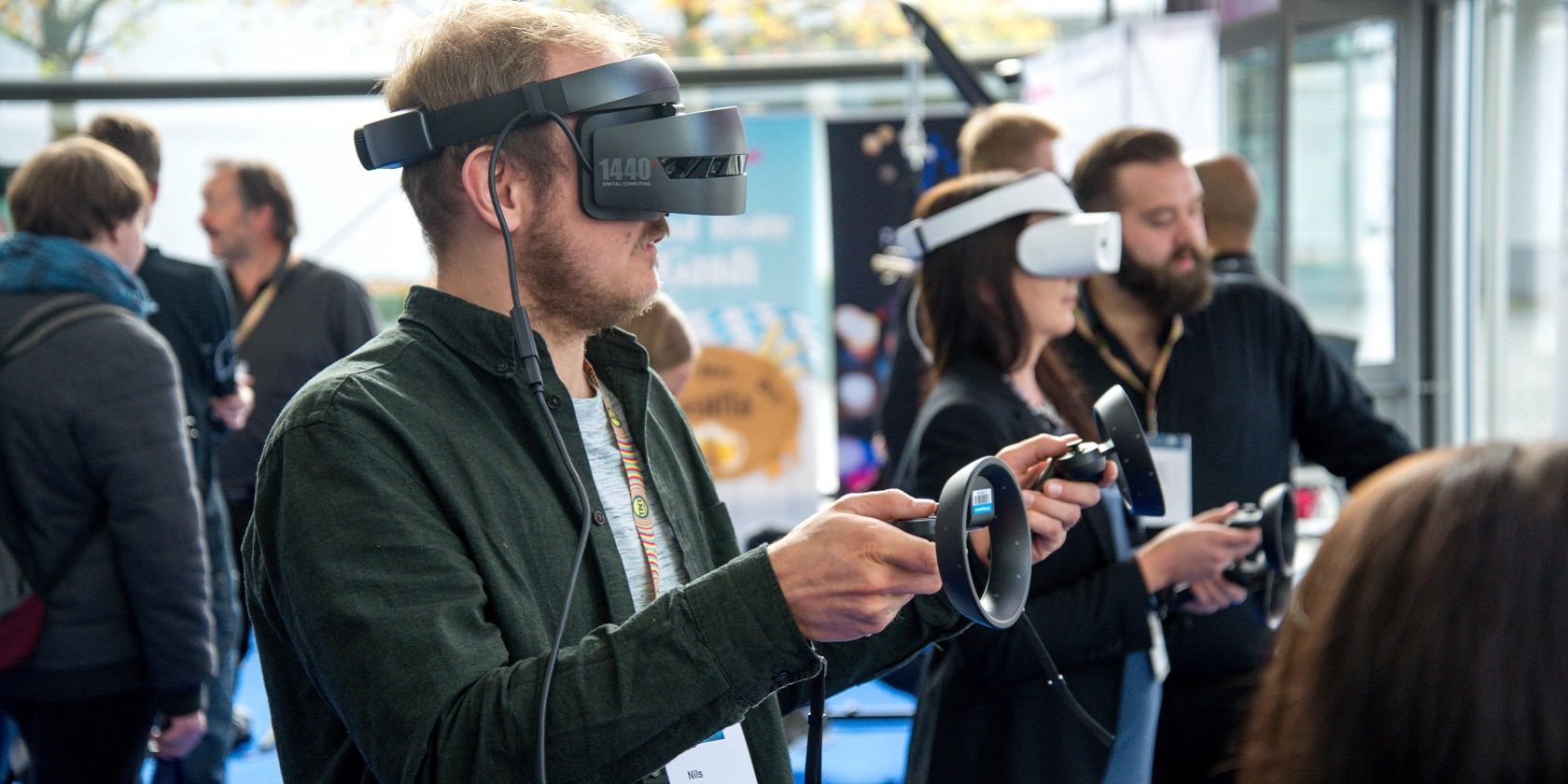We’re living in a digital age where the virtual and physical worlds are converging. The immersive experiences we’ve seen in our favorite science fiction movies are now becoming a reality—all thanks to Extended Reality (XR). Imagine what it might be like to live in a futuristic world where virtual experiences are part of our lives.
In this article, we’ll explore what XR is, and we’ll outline the impacts it has on our world.
What Is Extended Reality (XR)?
XR refers to the use of immersive technologies that extend reality and merge the physical and virtual worlds. XR is an umbrella term incorporating virtual reality (VR), augmented reality (AR), and mixed reality (MR).
Virtual Reality
Virtual reality (VR) allows you to interact within an artificial three-dimensional environment using electronic devices such as VR headsets, controllers, and gloves. The Oculus Quest 2, a multimedia entertainment VR system, is one of the most famous VR solutions on the market.
An example of a VR experience is through the Batman: Arkham VR game. The game immerses you in a virtual world where it feels like you’re solving real-life crime mysteries.
Augmented Reality
Augmented reality (AR) describes the interaction between a virtual experience and the real world. It enhances the real environment with images, animation, or text. It could be experienced through AR smart glasses, tablets, and smartphones.
An example of an AR experience is Snapchat filters that add digital layovers—such as hats or glasses—to your photos. AR is the most widely adopted of all XR technologies. This is mainly because it requires the least amount of processing and functions on most common devices.
Mixed Reality
Mixed reality (MR) is a hybrid between VR and AR. It aims to fill the gap between the virtual and augmented worlds. It combines both the digital and the real world into one environment, so they coincide and interact with each other in real-time. This could be experienced through MR-headsets such as the Microsoft HoloLens.
An example of an MR experience is Microsoft’s HoloLens integration with Skype. The experience allows you to make a Skype session feel like a physical meeting. It lets you virtually control your Skype session by touching the simulation with your hands.
Top Industries Transformed by XR Technology
The XR market is experiencing rapid growth. Here are the top industries transformed by XR technology:
Retail and Marketing
The retail sector is getting smarter by allowing customers to try out products at the comfort of their homes virtually. WatchBox has adopted AR to provide its customers the privilege of trying out virtual watches on their wrists. The Swedish furniture company IKEA launched the IKEA Place AR app. This enables customers to place virtual furniture items into their homes using AR technology on their smartphones.
Education and Training
XR allows people to be trained and educated in safe, virtual environments without putting their lives in danger. Medical practitioners, firefighters, and pilots can simulate dangerous scenarios with minimal risk and less expense. The experience they acquire helps prepare them to handle real-life situations with ease.
For example, the US Marines developed the Augmented Immersive Team Trainer system. This was created using Microsoft’s HoloLens MR headsets. The system adds fire-power effects and enemies in a virtual environment. This helps enhance soldiers’ performance and prepares them for real-world combats.
Real Estate
XR solutions allow real estate agents to send consumers on virtual viewing tours. This provides the luxury of exploring houses without having to visit the site physically. Potential renters or buyers can virtually visit multiple locations easily and decide on the ones worth visiting in person.
Entertainment
The entertainment industry uses XR technologies to give consumers tremendous experiences. XR enhances video games by putting you in a virtual environment that gives you an immersive experience. XR can also enhance other entertainment events like exhibitions and live music performances.
XR Technology Challenges
Those who are developing XR technologies are faced with some challenges. This includes:
Data Privacy Issues
XR technologies collect and process detailed personal data. This can be data about what you do, what you look at, and even your emotions. This can pose serious threats in case this data falls into the hands of cybercriminals. For this reason, XR technology developers face a major challenge when it comes to being compliant with all data protection requirements.
Costs
The cost of implementing XR technology is high, making it difficult for many companies to invest in it. AR technologies, like social media filters, are currently cheap and accessible for any smartphone user. However, virtual and mixed reality technologies require relatively expensive equipment.
Design and Development of XR Devices
The designs of some XR devices present challenges to different users. For example, the head-mounted VR and MR devices are often too heavy and uncomfortable for prolonged use. The devices are also known to cause eye strain and pain.
The development of XR technologies also still needs to be improved. For example, the Microsoft HoloLens can be controlled with gestures and voice commands. However, the gesture controls are only limited to two hand movements.
The Future of XR
Futuristic XR devices will provide personalized and seamless experiences. These devices could allow you to visit events from the comfort of your home using an internet connection. This will give you the same experience you’d get while attending a real concert or sporting event.
XR will allow out-of-home (OOH) and mobile advertising to create hyper-personalized ads. OOH digital screens will send you unique ads through sophisticated digital devices when you walk or drive past specific areas.
The coming years could see a new trend in creating virtual training simulations for climate crisis preparedness. XR will further provide interactive environmental education by creating virtual spaces where people can learn with ease.
We could also see the convergence of the smartphone, mobile VR headset, and AR glasses into a single XR wearable. Such a device could replace all the other screens such as smartphones and smart TVs.
Redefining Reality With XR Technology
XR technology is increasing the productivity of many industries such as retail, entertainment, and more. Many advancements and applications are still to be discovered with XR. It seems like we’re heading into an era where it’ll be difficult to distinguish between virtual and real experiences.
XR devices will become more compact and affordable in the future. As this technology grows more sophisticated and widespread, it’ll likely be adopted in more industries.
About The Author

